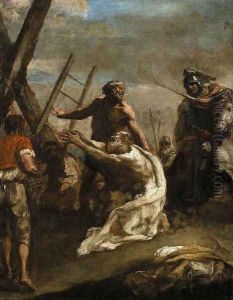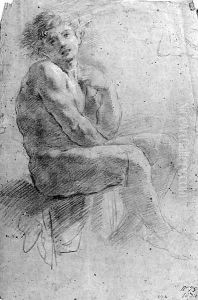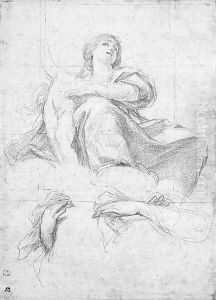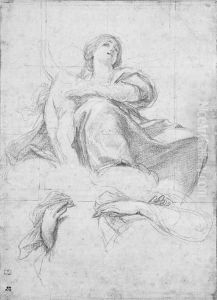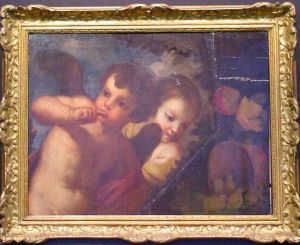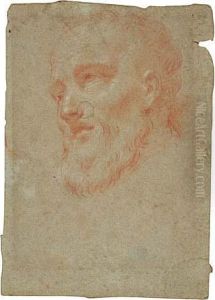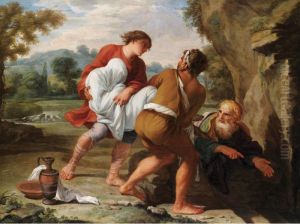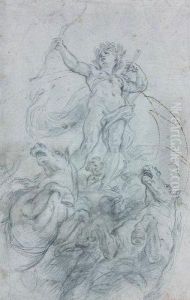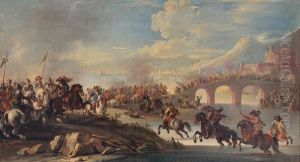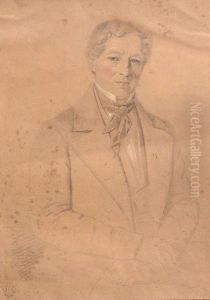Guglielmo Cortese (see COURTOIS, Guillaume) Paintings
Guglielmo Cortese, also known by his French name Guillaume Courtois, was an Italian painter and engraver born in 1610 in Saint-Hippolyte, France. Despite his French origins, he is often associated with the Italian Baroque movement due to his significant contributions and influence in Italy. Cortese's family moved to Italy when he was a child, and it was in Rome where he would eventually establish his career and make a lasting impact on the art scene of the 17th century.
Cortese was initially trained by his brother, Giovanni Domenico Cortese, also an artist, before studying under Pietro da Cortona, one of the most influential Italian Baroque painters and architects. Under Cortona's guidance, Cortese honed his skills and developed a style characterized by dynamic compositions, dramatic lighting, and a vivid use of color, which became trademarks of his work.
Throughout his career, Cortese was known for his religious and historical paintings, frescoes, and battle scenes. His ability to depict movement and emotion in his battle scenes brought him considerable fame. He worked on several important commissions in Rome, including work for the Church of the Gesu and the Basilica di Santa Maria Maggiore, contributing to the grandeur of Roman Baroque art.
Cortese's work was not limited to paintings; he was also an accomplished engraver, producing works that were highly regarded for their detail and craftsmanship. His engravings served to disseminate his style and the Baroque aesthetic more broadly, influencing artists both in Italy and across Europe.
Despite his French heritage, Cortese's contribution to Italian Baroque is undeniable. He remained in Italy for the rest of his life, passing away in Rome in 1667. His legacy is reflected in the continued admiration for his work and his influence on subsequent generations of artists. Cortese's art is a testament to the Baroque's dramatic, emotional, and visually rich style, marking him as a significant figure within this pivotal period in art history.
